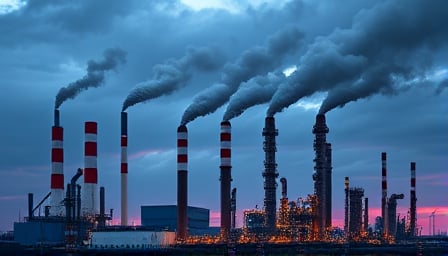Corporate Analysis of Dow Inc.
Dow Inc. has recently exhibited notable price volatility, with its equity experiencing a moderate upward movement amid a broader bullish trend in the Dow Jones Industrial Average. While the index’s momentum suggests continued upside potential, Dow’s individual performance remains ambiguous, reflecting underlying uncertainties linked to its financial reporting and legal exposure.
Market Context
The Dow Jones index, composed of 30 large-cap companies, has been trending upward as market participants anticipate sustained growth driven by robust macroeconomic indicators such as low inflation expectations, favorable monetary policy stances, and expanding consumer spending. Analysts project further gains over the next fiscal quarter. However, Dow Inc.’s share price has not mirrored this momentum. Its recent fluctuations suggest that investor sentiment toward the company is tempered by concerns that extend beyond the broader index dynamics.
Legal and Regulatory Risks
A key driver of Dow’s current uncertainty is a series of class‑action lawsuits alleging securities fraud. The plaintiffs contend that the company’s conduct between January and July 2025 caused substantial financial losses for investors. The lead plaintiff’s deadline for filing the complaint is set for 28 October 2025, creating a looming legal risk that may influence both short‑term valuation and long‑term strategic decisions. The lawsuits underscore the importance of robust corporate governance, transparent disclosure practices, and adherence to securities regulations—principles that are critical for maintaining investor confidence across all sectors.
Financial Metrics and Valuation
Dow’s market capitalization remains substantial, reflecting its status as a major global player in the chemical manufacturing and distribution industry. Nevertheless, its price‑to‑earnings (P/E) ratio is high relative to sector peers, suggesting potential overvaluation or heightened expectations of future earnings growth. High P/E levels can also signal increased volatility, particularly when coupled with legal uncertainty or shifts in commodity prices that affect raw material costs.
In addition to traditional valuation metrics, analysts should consider the company’s earnings quality, debt profile, and capital allocation strategy. Dow’s extensive product portfolio—including specialty chemicals, industrial solutions, and advanced materials—provides diversification benefits, but also exposes the firm to commodity price swings, regulatory changes, and environmental compliance costs that can erode profitability.
Competitive Positioning
Within the chemical industry, Dow competes with large multinational firms such as BASF, DuPont, and LyondellBasell. Competitive differentiation often hinges on innovation, supply‑chain efficiency, and global market reach. Dow’s extensive R&D capabilities and strategic acquisitions have positioned it as a leader in high‑value specialty chemicals, yet the company faces pressure from emerging low‑carbon solutions and sustainability initiatives. These industry trends necessitate continuous investment in green chemistry and circular economy practices to maintain market relevance and regulatory compliance.
Cross‑Sector Implications
The legal challenges confronting Dow Inc. are not isolated to the chemical sector; they echo a broader pattern of heightened scrutiny across corporate America. Issues such as data security, executive compensation, and ESG reporting are increasingly influencing investor decisions. Consequently, Dow’s trajectory may serve as a bellwether for how companies in heavily regulated industries navigate the intersection of profitability, compliance, and investor expectations.
Economic Outlook
Macro‑economic factors that may shape Dow’s future include:
- Commodity Price Volatility – Fluctuations in oil, natural gas, and other feedstock prices can directly affect production costs and margins.
- Monetary Policy – Rising interest rates could constrain capital expenditures and increase debt servicing costs, influencing the company’s investment decisions.
- Global Supply Chain Dynamics – Ongoing disruptions, trade tensions, and geopolitical risks may impact Dow’s ability to source materials and deliver products efficiently.
Understanding these drivers is essential for investors who seek to assess Dow’s risk profile and potential for sustainable growth.
Conclusion
Dow Inc.’s current market performance illustrates the complexity of evaluating a large, globally integrated firm amid legal uncertainty and volatile commodity markets. While the broader Dow Jones index signals bullishness, Dow’s individual valuation remains affected by high P/E ratios, pending litigation, and sector‑specific risks. Investors and analysts should apply rigorous, sector‑aware scrutiny—balancing financial metrics with an assessment of competitive positioning and macro‑economic factors—to form a comprehensive view of Dow’s prospects.
